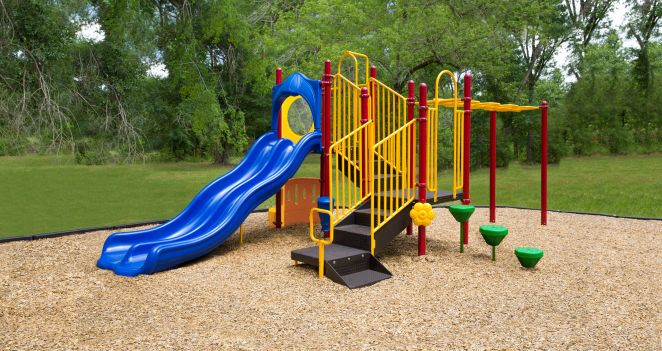
Use Zones
All commercial play equipment must be installed with the appropriate Use or Safety Zones located around the equipment. A Use Zone is defined as the surface under and around the equipment onto which a child accidentally falling from or exiting from the equipment would be expected to land.
In general, a use zone of at least 6 feet of free and open space must surround all equipment connected to or making up a play structure. Consult your installation manual for the appropriate use zone measurements for your specific play structure.
Never install playground equipment near, around, or in conjunction with swimming pools, ponds, lakes or any other bodies of water.
Pieces of freestanding playground equipment may have different spacing requirements and can vary depending on the type of equipment. Other than the actual equipment itself, the use zone should be free of all obstacles that children could run into or fall on top of and subsequently be injured. Consult your installation instructions for the appropriate use zone measurements for any freestanding play equipment.
Never overlap the use zones of adjacent equipment such as a play structure and nearby piece of freestanding equipment. Each play structure and each piece of freestanding play equipment must have its own use zone, and these cannot overlap.
Exceptions to the 6 foot rule are made in the case of swings and slides:
Swings- A use zone equal to 4 times the height of the top rail is needed in front of and behind swings to ensure a safe and compliant swing set. As a general rule, swings should be located toward a corner, side, or edge of the play space.
Slides- The use zone surrounding a slide should be a minimum of 6 feet, except for the slide exit area where the use zone must be a minimum of 6 feet or the distance between the highest point of the slide to the protective surfacing. The use zone at the slide exit need not exceed 8 feet. Slide exits should be located toward an uncongested area of the playground.
